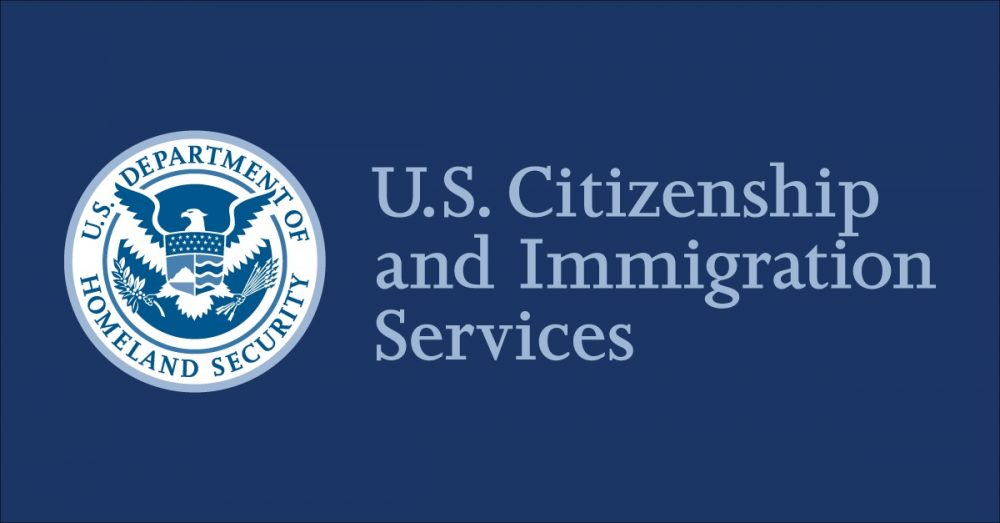USCIS set to change H-1B lottery process

Logo credit: https://www.uscis.gov/

Alarmed over a record H-1B registrations for FY 2024 due to multiple entries for the same individuals, US Citizenship and Immigration Services (USCIS) is planning to change the process to reduce the possibility of misuse and fraud.
USCIS reported 780,884 H-1B registrations for FY 2024, an increase of 61% over the 483,927 registrations for FY 2023. The agency uses a lottery pick up the annual intake of 85,000 (65,000 plus a 20,000 exemption for advanced degree holders from US universities).
READ: Selected in H-1B registration lottery? What next (April 19, 2023)
In recent years, Indian professionals have cornered more than 70% of the annual cap of highly skilled foreign workers employed by US companies
“The large number of eligible registrations for beneficiaries with multiple eligible registrations – much larger than in previous years – has raised serious concerns that some may have tried to gain an unfair advantage by working together to submit multiple registrations on behalf of the same beneficiary,” USCIS stated.
“This may have unfairly increased their chances of selection. We remain committed to deterring and preventing abuse of the registration process, and to ensuring only those who follow the law are eligible to file an H-1B cap petition,” it stated.
“Based on evidence from the FY 2023 and FY 2024 H-1B cap seasons, USCIS has already undertaken extensive fraud investigations, denied and revoked petitions accordingly, and is in the process of initiating law enforcement referrals for criminal prosecution,” the agency said.
READ: USCIS replaces H-1B lottery with wage-based selection (January 8, 2021)
“The H-1B program is an essential part of our nation’s immigration system and our economy, and USCIS is committed to implementing the law and helping meet the ever-changing needs of the US labor market,” USCIS said.
“We are working on an upcoming H-1B modernization rule that will propose, among other improvements, bolstering the H-1B registration process to reduce the possibility of misuse and fraud in the H-1B registration system,” it stated.
READ: USCIS receives enough initial H-1B registrations to reach cap(March 28, 2023)
USCIS noted that “each prospective petitioner is required to sign an attestation, under penalty of perjury.” Among the items attested to is that “the registration(s) reflect a legitimate job offer; and the registrant, or the organization on whose behalf the registration(s) is being submitted, has not worked with, or agreed to work with, another registrant, petitioner, agent, or other individual or entity to submit a registration to unfairly increase chances of selection for the beneficiary or beneficiaries in this submission.”
USCIS can deny a petition if it discovers an attestation is false. “Furthermore, USCIS may also refer the individual or entity who submitted a false attestation to appropriate federal law enforcement agencies for investigation and further action, as appropriate,” according to USCIS.
“Reforms could increase the selection rate in next year’s lottery. However, attention to the registration process obscures a more fundamental issue,” according to Forbes.
USCIS data show due to the low annual H-1B limit, over 75% of H-1B registrations for FY 2024 would have been rejected even if beneficiaries with multiple registrations were excluded from the lottery.
READ: Silicon Valley lawmakers ask USCIS to ensure H-1B workers stay(April 13, 2023)
USCIS selected only 14.6% of eligible H-1B registrations for FY 2024, it noted citing a National Foundation for American Policy analysis of government data.
That compares to 26.9% for FY 2023 and 43.8% for FY 2022. For FY 2021, nearly half, or 46.1%, were selected in the H-1B lottery process.
Despite some high-profile layoffs, the demand for scientists and engineers in technology-related positions remains high, Forbes noted. In March 2023, the US unemployment rate was 1.3% in architecture and engineering occupations and 2.2% in math and computer occupations.
READ: H-1B Electronic Registration Process (March 27, 2023)
Nearly 70% of H-1B visa holders approved for initial employment in FY 2021 earned a master’s degree or higher, according to USCIS.
When employers visit US universities to recruit, they find foreign nationals account for 74% of the full-time graduate students in electrical engineering and 72% in computer and information sciences.
The argument that H-1B visa holders are “cheap labor” is not supported by the data, Forbes said. The median annual salary for H-1B visa holders in computer-related occupations in FY 2021 was $111,000, and the average salary was $118,000, according to USCIS.
The number of eligible H-1B registrations with only one employer increased by 66% between FY 2022 and FY 2024. That reflects the high demand for talent with technical skills in the US economy.
“The low annual limit on H-1B petitions remains the most serious problem confronting employers attempting to secure foreign-born talent,” according to Forbes.

